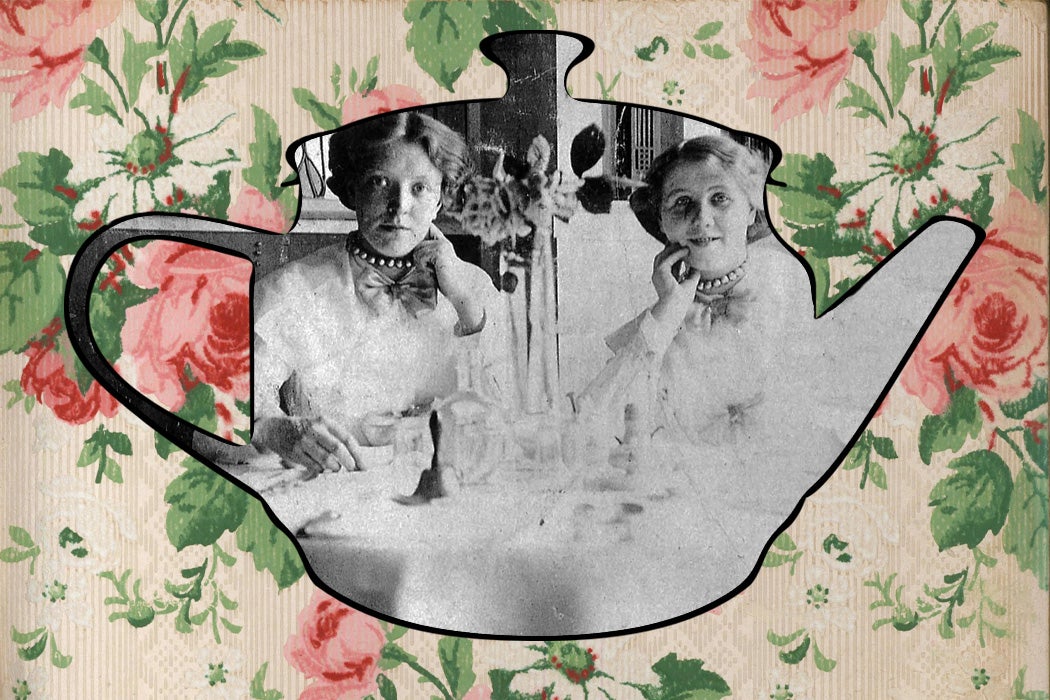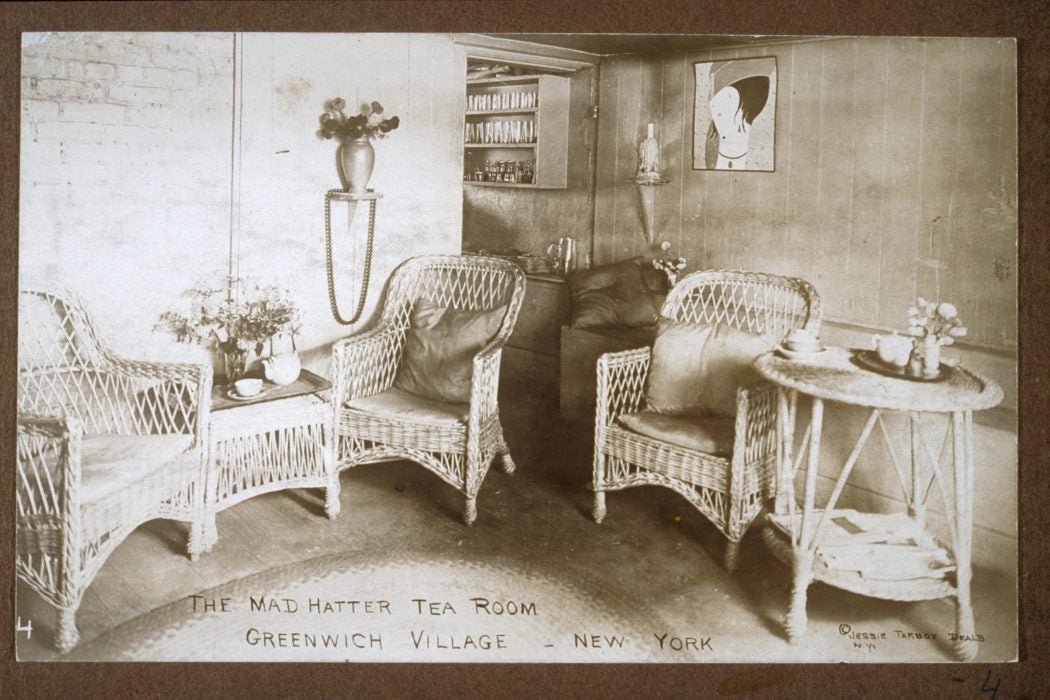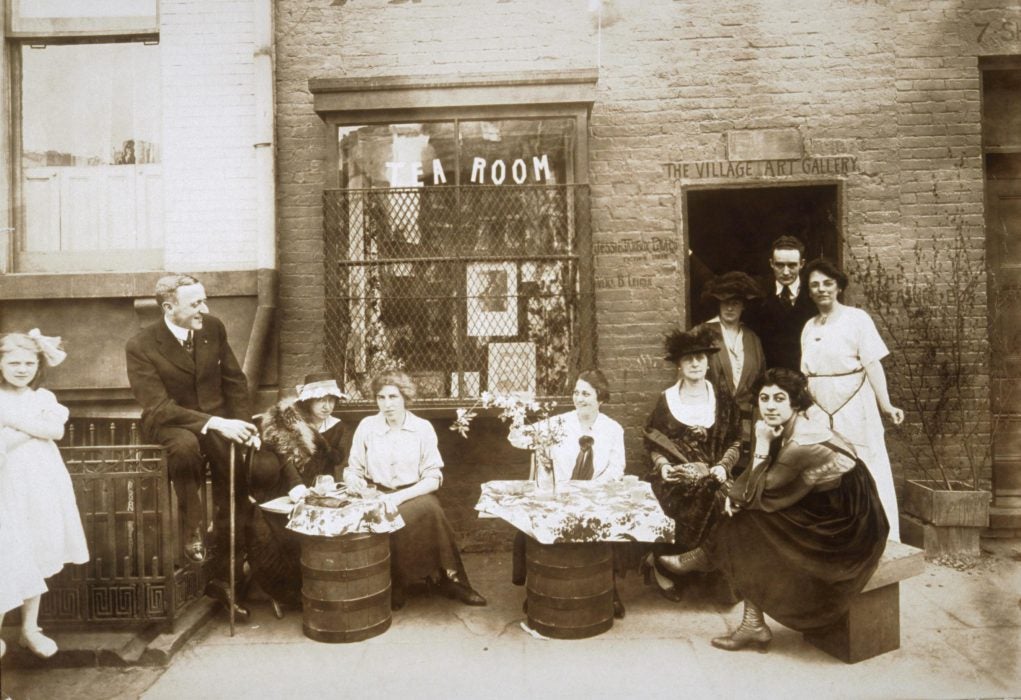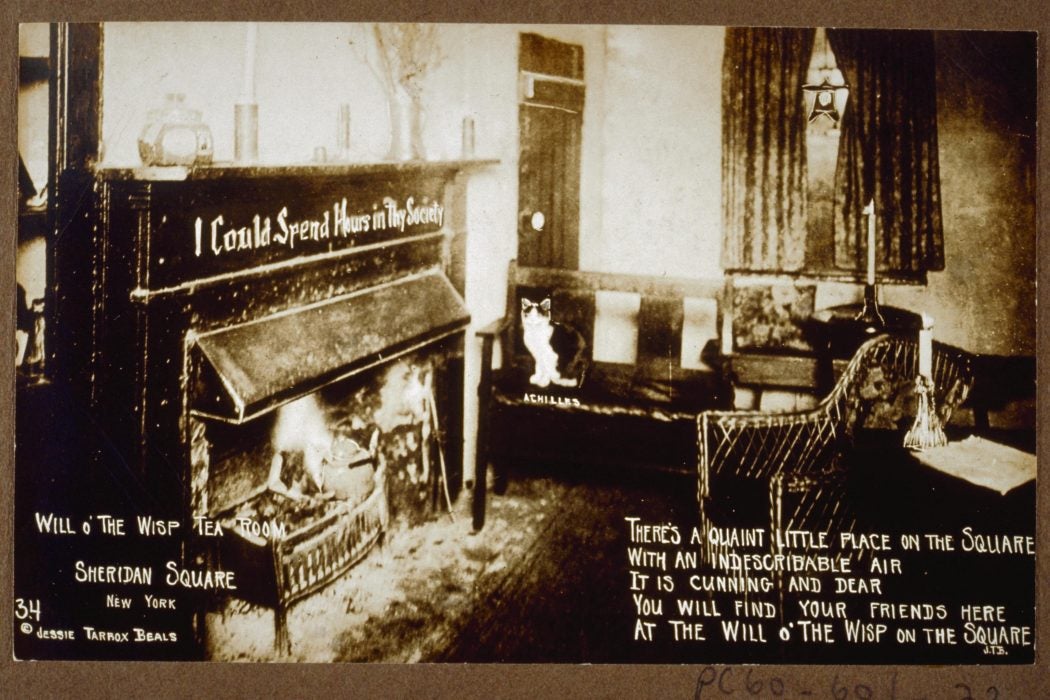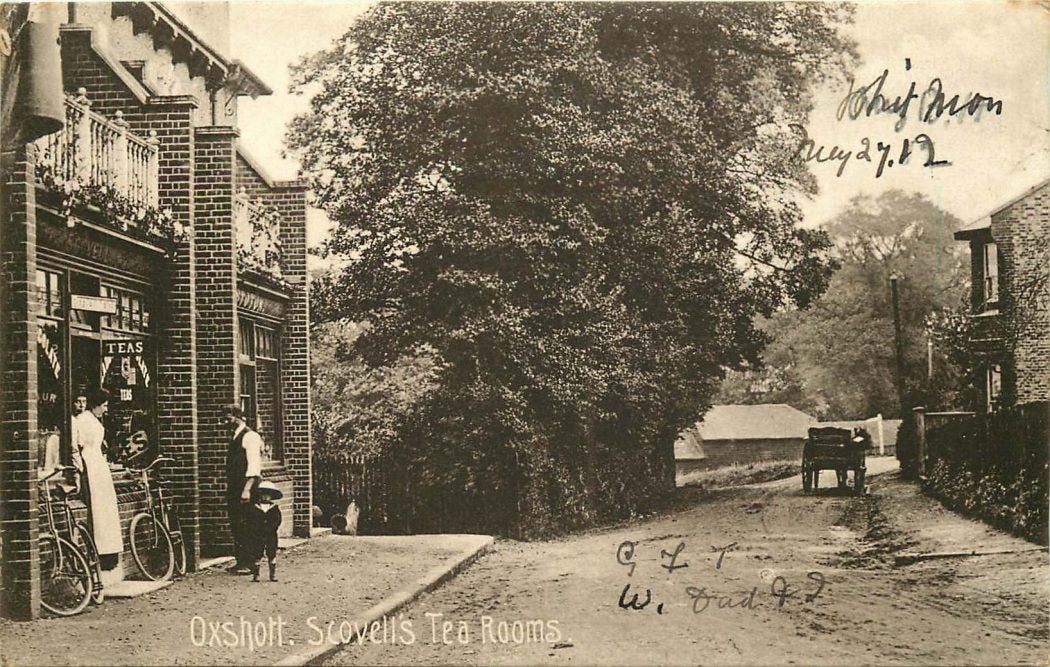When you hear the words “tea room,” it’s likely that you immediately think of a Victorian-inspired establishment best suited to special occasions, a place for women in pearls. If you’d lived at the turn of the 20th century in Scotland, or the early 1900s in America, however, it’s likely that you would have a different picture entirely.
If you could travel back to Glasgow in 1878, you’d be just in time to have a bite to eat at Kate Cranston’s newly opened Crown Tea Rooms. Cranston’s brother, Stuart, was a tea retailer who had the brilliant idea of putting up a few tables and chairs and serving tea and light refreshments in his shop three years before the first tea rooms opened. The idea of a place to have a light lunch, alcohol free, caught on in the height of the temperance movement. Cranston’s tea rooms (four in all) became just a few of the new trend, mostly catering light meals to businessmen, well before tea rooms began popping up in department stores and near suburbs. These tea rooms were largely focused on female diners.
In America, women were not only ideal tea room consumers, nearly all tea rooms were owned by women. It started small, with mostly middle class women opening up a room in their home or setting up tables in their garden and offering tea and light meals. This phenomenon wasn’t unique to the U.S.: British women served scones, cakes, and tea as a way to make extra money, too. Unlike many occupations, feeding people and presiding as hostesses were accepted ways for women to enter the workforce, since these tasks felt a lot like what they’d been doing all along, without pay.
The historian Jan Whitaker sets the scene in the introduction to her book Tea at the Blue Lantern Inn: A Social History of the Tea Room Craze in America:
Picture a woman in South Sudbury, Massachusetts, putting down her spoon and bowl and taking off her apron as she hears an approaching car. She opens the front door of her Cape Cod cottage and greets her guests, a group of four youngish Bostonians out for a Sunday spin. After driving exactly twenty-two miles from Boston’s Copley Square on this July day, they are not only hungry, but hot and thirsty, too. They sit down at one of the small tables in her converted living room, scanning the room for antiques and hooked rugs (as they always do when they are in the country)…
They then consult the neatly hand-lettered little menu. Creamed chicken on toast. Nut and jelly sandwich. Pear and ginger salad. Iced tea (or iced coffee), Lemonade, and Grape Juice. A simple scene, yet one that captured the imagination of the American woman as few could. In magazine after magazine, stories about tea rooms like this one created an immense wave of interest in readers who longed to “run a tea room of their very own.”
Other women rented or borrowed barns, old houses, and grist mills to serve as makeshift tea rooms. Cooking and other food prep would take place at home or over tiny stoves. Most tea rooms didn’t have access to water, requiring their proprietors to bring in all supplies.
In the early 1900s, tea rooms were the answer for single women who wanted some sort of career. They were well suited to widows or wives hoping to supplement family income, or teachers who wanted to continue working during the summer (many of them set up shop for only a few months in fashionable vacation spots).
What was the impetus for so many women to start tea rooms? Much of it had to do with women’s inability to dine publicly unaccompanied in regular restaurants, according to the Americanist Cynthia Brandimarte’s article, “‘To Make the Whole World Homelike’: Gender, Space, and America’s Tea Room Movement.” The tavern and hotel scenes were dominated by men. Women weren’t welcome in some places at all, and only with a man in others. The tea room, so often either a home or a homelike environment, gave women chances to dine out—whether she was a working woman on a lunch break, taking a break from shopping, or touring with friends in the newly invented automobile. Women felt comfortable in these restaurants, which prided themselves on serving lighter, fresher fare than the heavy meat-and-potatoes coursed meals served at restaurants and hotels.
As a young girl, I read books like the Nancy Drew mysteries—the characters were always popping into tea rooms for lunch. To a modern reader, tea rooms conjured visions of crumpets and china, but when the books were published (the first in 1930), mentioning a tea room was meant to communicate to the reader that Nancy and her friends were independent women who could eat out without a man to escort them. While most women think nothing of dining out without a man now, tea rooms played a major role in bringing about this phenomenon.
You probably take for granted the homey touches at your favorite restaurants, like candles and flowers on the tables. But making a place as comfortable as your own dining room wasn’t always the norm. In an article called “Domesticating the Restaurant: Marketing the Anglo-American Home,” Whitaker traces the “home ideal” trend in dining establishments to the first third of the twentieth century. Before this era, restaurants were divided into upper- and lower-class establishments, with nothing in the middle, but middle class women as business owners changed that. “The home ideal on which they based their restaurants, though presented as universal, was rooted in a privileged and ethnocentric middle-class standard that did not grant working-class immigrant homes equal value. By the 1940s, however, it had become an industry norm.”
Another crucial element of the tea room movement came in the form of Prohibition. Suddenly restaurants that didn’t rely on alcohol to pay their bills were in demand. Some called tea rooms “T-rooms,” with the “T” standing for temperance. They joined soda fountains and cafeterias in the new genre of places to eat but not drink. In the UK, tea room ties to temperance and the suffragist movement were strong, according to tea historian Jane Pettigrew. Tea rooms became hotbeds for women seeking systemic social change.
Although there were few tea room chains in America, many of these establishments shared common characteristics. They were usually decorated with Colonial furniture and hooked rugs, sometimes with an artfully placed spinning wheel. The women proprietors were known to decorate with antiques, which they sold to interested diners. Just as modern tea rooms harken to the Victorian era, early tea rooms were also drawn to the past, but found the Victorian era fussy. There was something wholesome and clean about plain wooden furniture and pewter light fixtures. This pared-down aesthetic was especially appealing at a time when technology and daily life were becoming ever more complicated.
The food served at tea rooms also reflected these values. If you were motoring in the country, it was almost certain that you’d find chicken and waffles on the tearoom menu (this was before chicken was readily available in cities, only handy to those who kept fowl). Lots of dishes promised “surprise,” like the tomato surprise, which was usually a whole tomato stuffed with chicken salad and served on a bed of lettuce. Another staple was the popular “cheese dreams,” which were made, according to Whitaker, “by spreading cheese, mustard, and cayenne pepper on a bread round and baking it.”
The menus were also full of salads, most of them of the fruit or mayonnaise variety. You might recognize tiny finger sandwiches, but many of them had unfamiliar fillings to a modern palate. One example is a “Novelty” sandwich, which Whitaker describes as chopping an onion, ten pitted olives, one green pepper, and a dill pickle, all mixed together with cottage cheese. Surprisingly, one thing you wouldn’t always find in a tea room was tea.
Although the homey atmosphere of the tea room initially made them acceptable workplaces for women, many proprietors took a different tactic to attract clientele, especially in the Bohemian paradise of Greenwich Village, which was filled with tea rooms by the 1920s. These tea rooms often featured whimsical themes (one early example was “The Mad Hatter”) and erratic hours. Most of them thrived on regular patrons who considered the tea room their own. Instead of understated tones for walls and furnishings, everything was bathed in color, a trend that eventually spread to other tea rooms outside the Village.
Whitaker quotes American Cookery magazine on tea rooms during the Depression, saying that when a woman heard the words “tea room” she thought of “cozy little places with dimmed lights and candles; walls and furniture glaring in red; weird, fantastic colorings—a place where she may invite a friend or a girl chum, have a dainty luncheon, and gossip.” While this sort of place appealed to many women, Whitaker observes that men were still very drawn to restaurants that felt like homes.
Once a Week
Modern tea rooms and tea houses don’t feel quite as radical now as they did at their inception, but the current model does provide a countercultural atmosphere, encouraging patrons to slow down and enjoy both refreshments and good company without distractions. As Whitaker notes, these modern tea rooms focus on the Victorian era: “[I]t may be that the Victorian age symbolizes for women of the early twenty-first century something very similar to what the Colonial period meant to their early twentieth-century ancestors. For both, the past may represent a warmer, sweeter, more hospitable time.”
Though most tea rooms closed by the end of the 1950s, they had already succeeded in changing the entire landscape for female diners. We have these establishments—often quirky, makeshift, and temporary—to thank for a world where women can dine out comfortably on their own.
